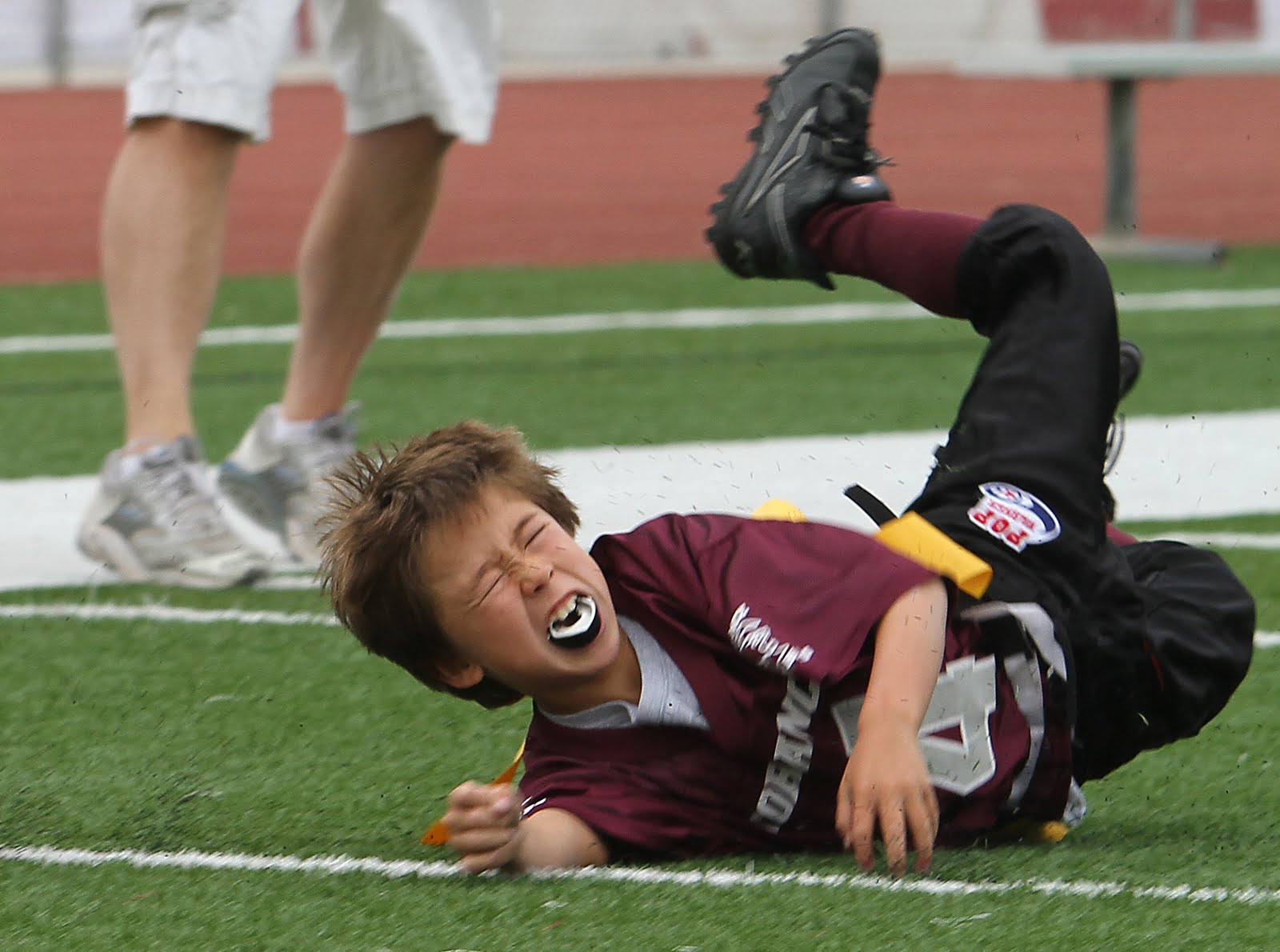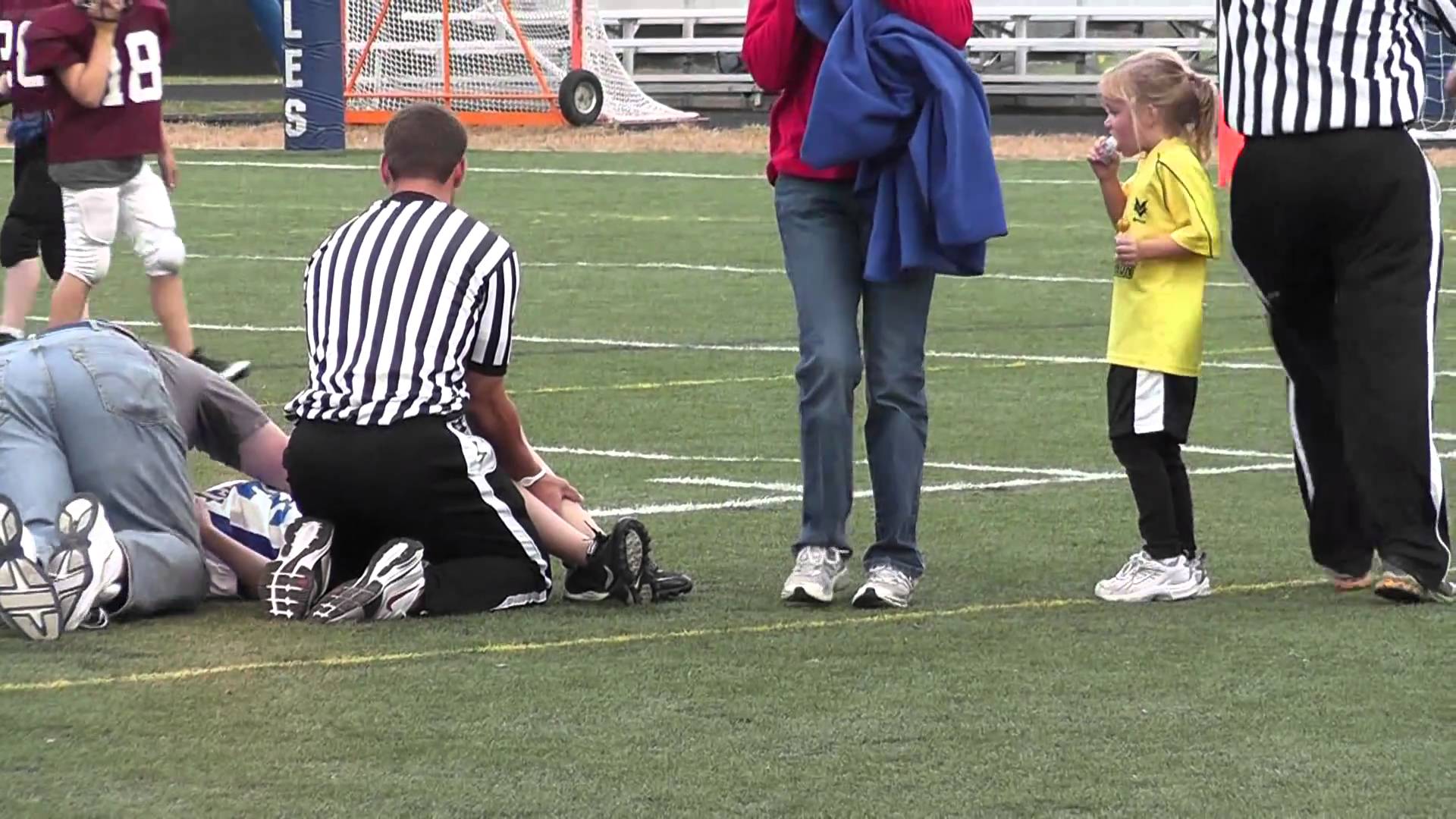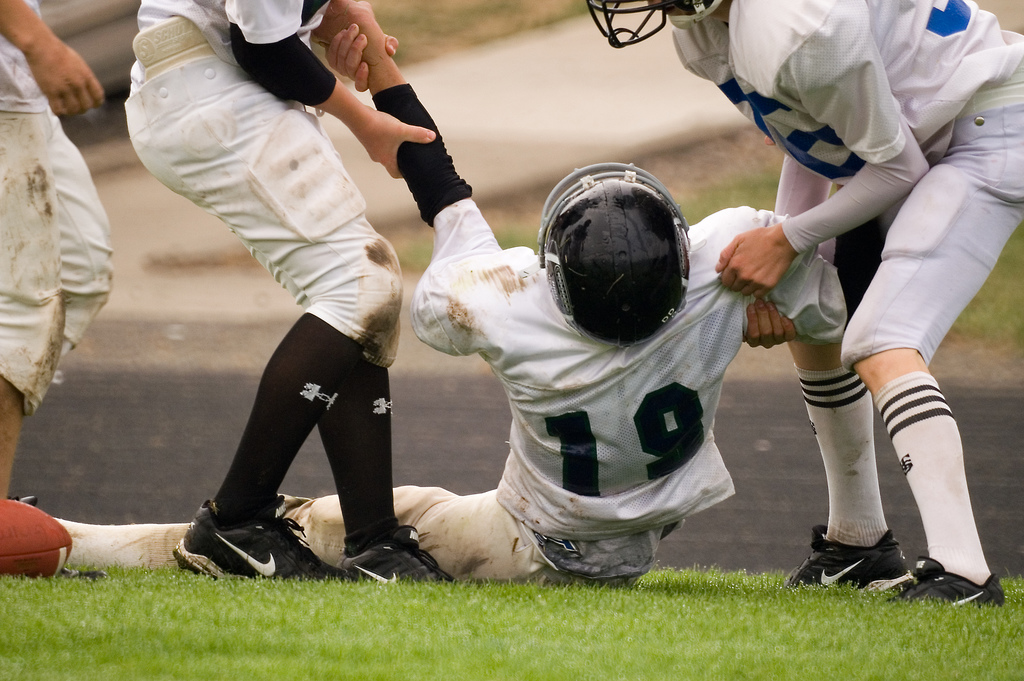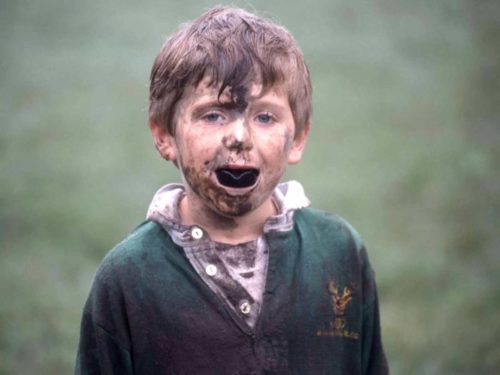New Concussion Biomarker Possible For Children’s Head Injuries
We’ve all heard of the tumult going on over head injuries, concussions, traumatic brain damage, the NFL; but, there is little specific information helping parents about their children and sports.
I’m told that during the war the brits had difficulty accepting that their wounded “chaps” with belly wounds shouldn’t be given tea to drink (it causes peritonitis) because doing so was such a national “tradition”—such is American football!
Is rugby too tough for kids? A new concussion biomarker needed
One father tried to convince me that “all that brain injury junk is no different than what they want us to believe about the Ozone layer! It’s just players who want more money!” No kidding. The only thing he convinced me of was that he was… was… ah… dangerously uninformed.
I’ve examined enough injuries and looked at enough x-rays, CT scans and MRIs to know that concussions are not only real but massively more dangerous, debilitating… and common, than any of us ever believed.
And (unfortunately) I the have autopsy results on my side!!
A Concussion Biomarker
A “blood test” for children’s head injuries
The big issue is: unless the concussion is fairly bad there is no x-ray, CT or MRI that will show it. If a child’s head injury is significant enough to cause neurological deficits (so they are seen on a physical examination)… well, it’s already more severe than I want to see it on your child.
But wait, we know that any time a cell is damaged anywhere else in the body its disruption leaks “damaged tissue juice” into the surrounding area of some kind. Right? Muscles, skin, liver, heart—they all do it. That’s the way the body works.
What if there was a “tissue juice” compound of some kind that was seen when the nerve cells in the brain got disrupted (bruised) in some way? Well, THERE IS. Two of them in fact: glial fibrillary acidic protein (GFAP) and ubiquitin C-terminal hydrolase (UCH-L1).
Not only that, as a BIG bonus, their measurable levels associate with the severity/significance of the head injury—GFAP being the more reliable of the two but they both have their uses.
New Concussion Biomarker Study

This quick article is about an early study which looks promising published in March (’17) by JAMA Neurology from the Orlando Medical Center in Florida.
Dr. Linda Papa is trying to quantify the correlation of how these two biomarkers are related to actual concussions and their symptoms in sports—not easy; because, the things we already know she will need to correlate her markers with aren’t all that much on solid ground in the first place—like subjective symptoms and physical observations.
However, the researchers did obtain 584 trauma patients—55% with mild or moderate traumatic brain injury (TBI) and 45% without—and discovered that the biomarkers did have predictive value.
They were able to identify the markers—GFAP from damaged astrocytes and UCH-L1 from damaged neurons— in the blood up to seven days after the injury! But, mind you, it’s only the recent development of new assay techniques which makes this possible because the amount of material is infinitesimally small.
Study Findings
Interestingly, this study seemed to be quite well thought out, made many measurements over time and gathered data not only about injury, symptoms and examination but results of CT scans and findings at surgery (if any).
That last part is very important because the only thing we’ve had going for us up to date is what symptoms are self-reported by patients, who may not be all that reliable and, as I said before, late occurring findings on physical exam and imaging studies.
If these markers are to be useful they not only must correlate with the obvious but also pick up those patients with a normal CT scan and physical but who go on to have long-term symptoms with concentration, memory, sleep and anxiety.
The only thing I wish they would have done but didn’t was to include children, all these subjects were adults; but, you’ve got to start somewhere and perhaps it would have been a little hard-sell to obtain children who were willing to have blood drawn 4 hours after injury and at 19 additional time points during the following 7 days.

Abnormal GFAP and UCH-L1 levels were detectible within one hour of injury! Not only that, the neuron damage marker (UCH-L1) rose rapidly, peaked at 8 hours then declined rapidly over 48 hours while the marker from astrocyte damage (GFAP) peaked at 20 hours then slowly declined over 72 hours. Both were detectable within 1 hour of injury.
Over the week of testing they were able to determine the “diagnostic range” of the markers for distinguishing those with and without mild to moderate TBI: 0.73-0.94 for GFAP and 0.30-0.67 for UCH-L1.
They were also able to see a correlation of these markers for patients who eventually had positive CT lesions and for those who eventually required surgery. Positive CT: 0.80-0.97 GFAP, 0.31-0.77 UCH-L1; and, Neurosurgery: 0.91-1.00 GFAP, 0.50-0.92 UCH-L1.
I give you those numbers to show that the figures also seem to correlate with the severity of the illness; and because, if this pans out, this is exciting stuff! We just may be getting a handle on this concussion stuff after all.
What Does This Mean For Concussions?
The author of the report notes that for early injuries performing both tests gives a little more accuracy; but, each test probably has its usefulness—UCH-L1 in the first day (or two) after injury and GFAP up to 7 days after the injury.

Both will probably be better than what we have now which is very subjective. And we will mostly likely see substantial changes in both the way we manage concussion and even the way we play contact sports, once the tests become routinely available in about two years.
For example, both tests perform well within 16 hours of injury so UCH-L1 could be used in the ambulance, on the playing field or on the battlefield.
Along with GFAP, UCH-L1 could help determine whether a patient should be admitted for observation or transferred to a trauma center for possible surgery.
GFAP will undoubtedly eventually be used to assist rehab and return-to-play decisions.
I’m hopeful about seeing these tests pan out for clinical use because of all the good reviews by others now appearing in the literature. We’ve just got to get studies run on children in sports next.
[JAMA Neurol. Published online March 28, 2016]

